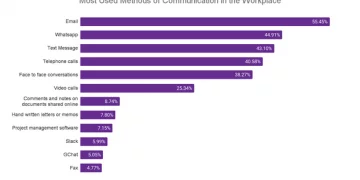
Creating a Personal Development Plan
There’s something to be said about trusting your instincts and going with the flow.
There’s a time and place to allow the universe to manifest.
But when you’re committed to pursuing goals and improving your life, having a plan can be the difference between seeing it happen in just a couple of short years or finding yourself in the same situation after years of keeping your dream life as just that – a dream.
In this article, we take a look at what a personal development plan can do for you and how you can get started with creating one.
Creating a personal development plan is also covered in our assertiveness skills courses!
What is a Personal Development Plan? Why Do You Need One?
A personal development plan is exactly what it sounds like – having a structure that allows you to take control of achieving what you want, both personally and professionally.
As with everything – from marketing to a 2-week holiday – things tend to flow more smoothly when there’s a well-thought-out plan in place.
Just as it’s easier to execute a marketing campaign, or enjoy a vacation when the steps are laid out and the big picture is always in view.
Having a personal development plan ensures that you always have a guide every step of the way.
We often have a good enough idea of what we want and how we would like to go about pursuing it, but without a plan, it’s easy to miss subtle, yet important details that can help us along the way.
A personal development plan outlines the following:
- What is important to you?
- What do you want to achieve?
- What strengths do you have that can help you achieve your goals?
- What do you need to and develop in order to achieve your goals?
Big picture plans typically take time to achieve.
This means that a personal development plan will come in handy over a number of years.
Usually, they are used by people to plan for working their way up the career ladder. The plan allows them to lay out the training and experience they’ll need to progress to becoming a line manager, then a manager, senior manager and on up through a corporate hierarchy.
For more on communication, check out our communication statistics here!
It Starts with You
As with every plan, it’s built upon what goals you want to achieve.
Going back to the marketing example, if you’re creating a plan for an email campaign, you first need to identify what you want to accomplish. Is it to increase sales, drive traffic to your website, or get more qualified leads?
When it comes to personal development, you need to look within yourself.
Reflect on your current situation – What are you happy about? What areas do you want to improve? What tools/skills do you have to improve those? What opportunities can be made available?
Are there factors that are beyond your control in pursuit of your goals?
Mindtools suggests using a couple of traditional business tools to help you get started: SWOT and PEST analysis.
You’ve probably heard of SWOT (Strengths, Weaknesses, Opportunities, and Threats), and it’s a simple tool to help with your life audit.
It’s important to note that when performing a SWOT analysis, you don’t need to limit it to your professional skills.
As such, you can ask yourself the following questions to identify your strengths:
- What are you really good at?
- What skills are you consistently being recognized and rewarded for?
- What are you most proud of?
- What resources, experiences, and connections do you have access to that others don’t?
You can apply the same principle when trying to identify your weaknesses, opportunities, and threats.
Conversely, while a SWOT analysis helps you look within, PEST (Political, Economic, Socio-cultural, and Technological) analysis looks into external factors that can either help or hinder your personal development.
Performing a PEST analysis can make the difference between choosing an exciting career path, or struggling for survival in an industry that’s on the decline.
Let’s take political factors to give you an idea of how this works. For this, you can ponder the following questions:
- What regulations might affect your opportunities?
- Are there any policies that could support your opportunities?
- Are there expected changes in these policies?
- What opportunities or threats do these changes represent?
The difference with a PEST analysis is that there are opportunities and threats for each area you’ll be analyzing.
List all of these down, so you can have a macro look at the external factors you’ll need to face when trying to execute your plan. Then, pick your top opportunities and narrow them down into one or two that you think you can fully commit to.
By looking within and combining what you find with what’s beyond your control, you can have a big picture look at the challenges and possibilities, allowing you to craft a realistic plan that’s SMART (specific, measurable, attainable, time-bound).
More on setting SMART Goals here!
How to Create Your Personal Development Plan
Now, it might sound daunting, but there’s a simple approach to creating your personal development plan. It’s also important to note that its elements need not be set in stone. Certain unforeseen factors will arise, and you’ll inevitably need to pivot at some point. The plan is a guide, it shouldn’t take away your flexibility and ability to adapt.
Step 1: Define your goals
Your plan always begins and ends with what you want to accomplish.
Remember to segment your desires from your goals.
A new motorcycle might boost your zest for life, but it is probably not as important as enrolling in a course that could help you get promoted, exercising more or eating better.
As you did with the SWOT and PEST analysis, make a list of all your goals.
You will narrow them down later in the process so that you can focus only on what’s most important to you.
Step 2: Prioritise
The next step is to prioritise.
What is most important? What will make other things on the list easier to complete or even totally redundant?
Perhaps that new bike will be easier to acquire once you finish that course and get a better paying job. Perhaps getting healthier will make finishing that course easier for you.
Prioritise your list ruthlessly so that you can focus on the most important and most impactful goals first.
For more on prioritisation, check out our complete assertiveness training guide.
Step 3: Set a deadline
As a professional, you probably know how effective deadlines are at making you move.
It’s the same with goals.
You can have a list of the most narrowed-down goals, but if you don’t know when you want to achieve it by, it is unlikely you will realise it.
Instead of saying, “I’ll learn to code someday,” say, “I’ll finish that coding course in three months.”
Be realistic when setting deadlines. Don’t set yourself up to fail or set the bar so high that you give up before you even get started.
Step 4: Get support whereever you can
We all need a good support system.
Let’s say you want to switch careers.
Is there someone who’s experienced in that field you can go to for advice?
If not, you can even go online and find groups for virtually everything. You’ll be surprised at how accommodating people can be.
Step 5: Review and adapt
Your personal development plan isn’t set in stone.
As you go through the initial steps of your plan, take the time to review what seems to be working and what areas you’ll need to adjust.
The best laid out plans often require a level of adaptability, so be prepared to pivot whenever it’s called for.
Reviewing your plan regularly will allow you to be resilient as you persevere towards your goals.
Conclusion
Taking the time to create a plan is always better than lying around dreaming of a life you could have.
It takes time, effort, and perseverance to achieve any goal, but having a plan in your back pocket will make it all the easier for you.
What challenges have you encountered when chasing your goals and dreams?
Let us know in the comment section below.
For more on this topic, read our guide to assertiveness tips for managers or this other guide on how to create a personal development plan.


